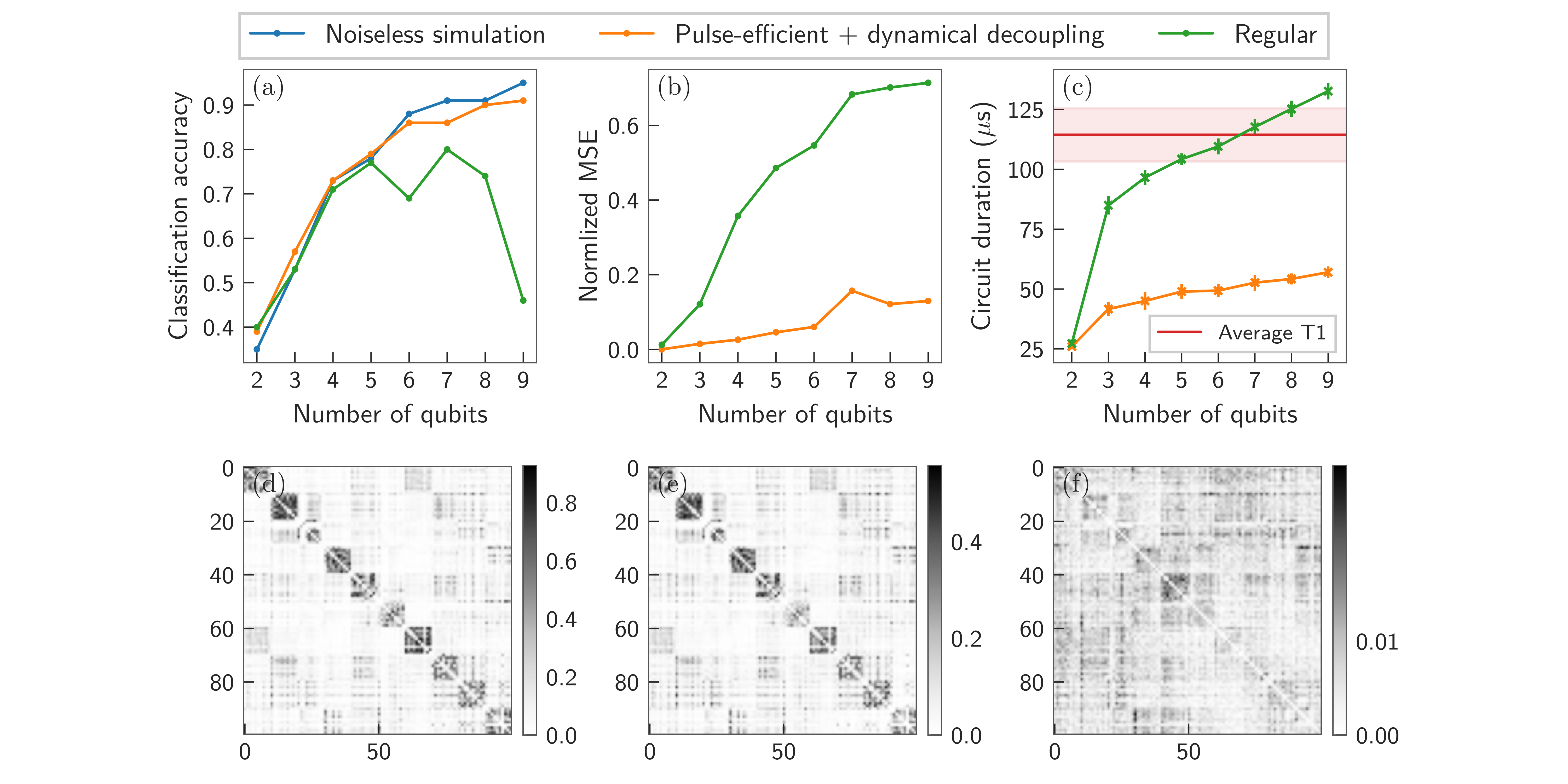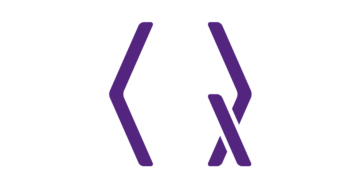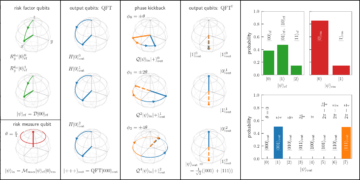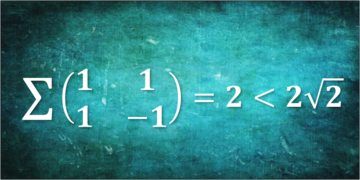1Kavli Institute of Nanoscience, Delft University of Technology, P.O. Box 4056, 2600 GA Delft, The Netherlands
2IBM Quantum, IBM Netherlands, Amsterdam, NH 1066 VH, The Netherlands
3IBM Quantum, IBM T. J. Watson Research Center, Yorktown Heights, New York 10598, USA
4IBM Quantum, IBM Research Europe – Zurich, 8803 Rüschlikon, Switzerland
Find this paper interesting or want to discuss? Scite or leave a comment on SciRate.
Abstract
Quantum machine learning algorithms based on parameterized quantum circuits are promising candidates for near-term quantum advantage. Although these algorithms are compatible with the current generation of quantum processors, device noise limits their performance, for example by inducing an exponential flattening of loss landscapes. Error suppression schemes such as dynamical decoupling and Pauli twirling alleviate this issue by reducing noise at the hardware level. A recent addition to this toolbox of techniques is pulse-efficient transpilation, which reduces circuit schedule duration by exploiting hardware-native cross-resonance interaction. In this work, we investigate the impact of pulse-efficient circuits on near-term algorithms for quantum machine learning. We report results for two standard experiments: binary classification on a synthetic dataset with quantum neural networks and handwritten digit recognition with quantum kernel estimation. In both cases, we find that pulse-efficient transpilation vastly reduces average circuit durations and, as a result, significantly improves classification accuracy. We conclude by applying pulse-efficient transpilation to the Hamiltonian Variational Ansatz and show that it delays the onset of noise-induced barren plateaus.

Popular summary
► BibTeX data
► References
[1] Peter Wittek. “Quantum machine learning”. Elsevier. (2014).
https://doi.org/10.1016/b978-0-12-800953-6.00001-3
[2] Jacob Biamonte, Peter Wittek, Nicola Pancotti, Patrick Rebentrost, Nathan Wiebe, and Seth Lloyd. “Quantum machine learning”. Nature 549, 195–202 (2017).
https://doi.org/10.1038/nature23474
[3] Maria Schuld and Francesco Petruccione. “Machine learning with quantum computers”. Springer. (2021).
https://doi.org/10.1007/978-3-030-83098-4
[4] S. Mangini, F. Tacchino, D. Gerace, D. Bajoni, and C. Macchiavello. “Quantum computing models for artificial neural networks”. Europhysics Letters 134, 10002 (2021).
https://doi.org/10.1209/0295-5075/134/10002
[5] Nathan Wiebe, Daniel Braun, and Seth Lloyd. “Quantum Algorithm for Data Fitting”. Phys. Rev. Lett. 109, 050505 (2012).
https://doi.org/10.1103/PhysRevLett.109.050505
[6] Seth Lloyd, Masoud Mohseni, and Patrick Rebentrost. “Quantum algorithms for supervised and unsupervised machine learning” (2013). arXiv:1307.0411.
arXiv:1307.0411
[7] Patrick Rebentrost, Masoud Mohseni, and Seth Lloyd. “Quantum Support Vector Machine for Big Data Classification”. Phys. Rev. Lett. 113, 130503 (2014).
https://doi.org/10.1103/PhysRevLett.113.130503
[8] Vittorio Giovannetti, Seth Lloyd, and Lorenzo Maccone. “Quantum random access memory”. Phys. Rev. Lett. 100, 160501 (2008).
https://doi.org/10.1103/PhysRevLett.100.160501
[9] John Preskill. “Quantum Computing in the NISQ era and beyond”. Quantum 2, 79 (2018).
https://doi.org/10.22331/q-2018-08-06-79
[10] Antonio D. Corcoles, Abhinav Kandala, Ali Javadi-Abhari, Douglas T. McClure, Andrew W. Cross, Kristan Temme, Paul D. Nation, Matthias Steffen, and Jay M. Gambetta. “Challenges and opportunities of near-term quantum computing systems”. Proceedings of the IEEE 108, 1338–1352 (2020).
https://doi.org/10.1109/jproc.2019.2954005
[11] Marcello Benedetti, Erika Lloyd, Stefan Sack, and Mattia Fiorentini. “Parameterized quantum circuits as machine learning models”. Quantum Science and Technology 4, 043001 (2019).
https://doi.org/10.1088/2058-9565/ab4eb5
[12] Marco Cerezo, Andrew Arrasmith, Ryan Babbush, Simon C Benjamin, Suguru Endo, Keisuke Fujii, Jarrod R McClean, Kosuke Mitarai, Xiao Yuan, Lukasz Cincio, et al. “Variational quantum algorithms”. Nature Reviews Physics 3, 625–644 (2021).
https://doi.org/10.1038/s42254-021-00348-9
[13] Kishor Bharti, Alba Cervera-Lierta, Thi Ha Kyaw, Tobias Haug, Sumner Alperin-Lea, Abhinav Anand, Matthias Degroote, Hermanni Heimonen, Jakob S. Kottmann, Tim Menke, Wai-Keong Mok, Sukin Sim, Leong-Chuan Kwek, and Alán Aspuru-Guzik. “Noisy intermediate-scale quantum algorithms”. Rev. Mod. Phys. 94, 015004 (2022).
https://doi.org/10.1103/RevModPhys.94.015004
[14] Vojtěch Havlíček, Antonio D Córcoles, Kristan Temme, Aram W Harrow, Abhinav Kandala, Jerry M Chow, and Jay M Gambetta. “Supervised learning with quantum-enhanced feature spaces”. Nature 567, 209–212 (2019).
https://doi.org/10.1038/s41586-019-0980-2
[15] Maria Schuld and Nathan Killoran. “Quantum Machine Learning in Feature Hilbert Spaces”. Phys. Rev. Lett. 122, 040504 (2019).
https://doi.org/10.1103/PhysRevLett.122.040504
[16] Francesco Tacchino, Stefano Mangini, Panagiotis Kl. Barkoutsos, Chiara Macchiavello, Dario Gerace, Ivano Tavernelli, and Daniele Bajoni. “Variational learning for quantum artificial neural networks”. IEEE Transactions on Quantum Engineering 2, 1–10 (2021).
https://doi.org/10.1109/TQE.2021.3062494
[17] Amira Abbas, David Sutter, Christa Zoufal, Aurelien Lucchi, Alessio Figalli, and Stefan Woerner. “The power of quantum neural networks”. Nature Computational Science 1, 403–409 (2021).
https://doi.org/10.1038/s43588-021-00084-1
[18] Hsin-Yuan Huang, Michael Broughton, Masoud Mohseni, Ryan Babbush, Sergio Boixo, Hartmut Neven, and Jarrod R. McClean. “Power of data in quantum machine learning”. Nature Communications 12, 2631 (2021).
https://doi.org/10.1038/s41467-021-22539-9
[19] Daniel Stilck França and Raul Garcia-Patron. “Limitations of optimization algorithms on noisy quantum devices”. Nature Physics 17, 1221–1227 (2021).
https://doi.org/10.1038/s41567-021-01356-3
[20] Jarrod R McClean, Jonathan Romero, Ryan Babbush, and Alán Aspuru-Guzik. “The theory of variational hybrid quantum-classical algorithms”. New Journal of Physics 18, 023023 (2016).
https://doi.org/10.1088/1367-2630/18/2/023023
[21] Samson Wang, Enrico Fontana, M. Cerezo, Kunal Sharma, Akira Sone, Lukasz Cincio, and Patrick J. Coles. “Noise-induced barren plateaus in variational quantum algorithms”. Nature Communications 12, 6961 (2021).
https://doi.org/10.1038/s41467-021-27045-6
[22] Supanut Thanasilp, Samson Wang, M. Cerezo, and Zoë Holmes. “Exponential concentration and untrainability in quantum kernel methods” (2022). arXiv:2208.11060.
arXiv:2208.11060
[23] Kristan Temme, Sergey Bravyi, and Jay M. Gambetta. “Error mitigation for short-depth quantum circuits”. Phys. Rev. Lett. 119, 180509 (2017).
https://doi.org/10.1103/PhysRevLett.119.180509
[24] Suguru Endo, Simon C. Benjamin, and Ying Li. “Practical quantum error mitigation for near-future applications”. Phys. Rev. X 8, 031027 (2018).
https://doi.org/10.1103/PhysRevX.8.031027
[25] William J. Huggins, Sam McArdle, Thomas E. O’Brien, Joonho Lee, Nicholas C. Rubin, Sergio Boixo, K. Birgitta Whaley, Ryan Babbush, and Jarrod R. McClean. “Virtual distillation for quantum error mitigation”. Phys. Rev. X 11, 041036 (2021).
https://doi.org/10.1103/PhysRevX.11.041036
[26] Bálint Koczor. “Exponential error suppression for near-term quantum devices”. Phys. Rev. X 11, 031057 (2021).
https://doi.org/10.1103/PhysRevX.11.031057
[27] Philippe Suchsland, Francesco Tacchino, Mark H. Fischer, Titus Neupert, Panagiotis Kl. Barkoutsos, and Ivano Tavernelli. “Algorithmic Error Mitigation Scheme for Current Quantum Processors”. Quantum 5, 492 (2021).
https://doi.org/10.22331/q-2021-07-01-492
[28] Zhenyu Cai, Ryan Babbush, Simon C. Benjamin, Suguru Endo, William J. Huggins, Ying Li, Jarrod R. McClean, and Thomas E. O’Brien. “Quantum error mitigation” (2023). arXiv:2210.00921.
arXiv:2210.00921
[29] Abhinav Kandala, Kristan Temme, Antonio D Córcoles, Antonio Mezzacapo, Jerry M Chow, and Jay M Gambetta. “Error mitigation extends the computational reach of a noisy quantum processor”. Nature 567, 491–495 (2019).
https://doi.org/10.1038/s41586-019-1040-7
[30] Samson Wang, Piotr Czarnik, Andrew Arrasmith, M. Cerezo, Lukasz Cincio, and Patrick J. Coles. “Can error mitigation improve trainability of noisy variational quantum algorithms?” (2021). arXiv:2109.01051.
arXiv:2109.01051
[31] Yihui Quek, Daniel Stilck França, Sumeet Khatri, Johannes Jakob Meyer, and Jens Eisert. “Exponentially tighter bounds on limitations of quantum error mitigation” (2023). arXiv:2210.11505.
arXiv:2210.11505
[32] Kento Tsubouchi, Takahiro Sagawa, and Nobuyuki Yoshioka. “Universal cost bound of quantum error mitigation based on quantum estimation theory” (2023). arXiv:2208.09385.
arXiv:2208.09385
[33] Lorenza Viola, Emanuel Knill, and Seth Lloyd. “Dynamical decoupling of open quantum systems”. Phys. Rev. Lett. 82, 2417–2421 (1999).
https://doi.org/10.1103/PhysRevLett.82.2417
[34] Bibek Pokharel, Namit Anand, Benjamin Fortman, and Daniel A. Lidar. “Demonstration of fidelity improvement using dynamical decoupling with superconducting qubits”. Phys. Rev. Lett. 121, 220502 (2018).
https://doi.org/10.1103/PhysRevLett.121.220502
[35] Zhenyu Cai, Xiaosi Xu, and Simon C Benjamin. “Mitigating coherent noise using pauli conjugation”. npj Quantum Information 6, 1–9 (2020).
https://doi.org/10.1038/s41534-019-0233-0
[36] Nathan Earnest, Caroline Tornow, and Daniel J Egger. “Pulse-efficient circuit transpilation for quantum applications on cross-resonance-based hardware”. Phys. Rev. Research 3, 043088 (2021).
https://doi.org/10.1103/PhysRevResearch.3.043088
[37] John P. T. Stenger, Nicholas T. Bronn, Daniel J. Egger, and David Pekker. “Simulating the dynamics of braiding of Majorana zero modes using an IBM quantum computer”. Phys. Rev. Research 3, 033171 (2021).
https://doi.org/10.1103/PhysRevResearch.3.033171
[38] Siyuan Niu and Aida Todri-Sanial. “Effects of Dynamical Decoupling and Pulse-Level Optimizations on IBM Quantum Computers”. IEEE Transactions on Quantum Engineering 3, 1–10 (2022).
https://doi.org/10.1109/TQE.2022.3203153
[39] Oinam Romesh Meitei, Bryan T Gard, George S Barron, David P Pappas, Sophia E Economou, Edwin Barnes, and Nicholas J Mayhall. “Gate-free state preparation for fast variational quantum eigensolver simulations”. npj Quantum Information 7, 1–11 (2021).
https://doi.org/10.1038/s41534-021-00493-0
[40] Z. Liang, H. Wang, J. Cheng, Y. Ding, H. Ren, Z. Gao, Z. Hu, D. S. Boning, X. Qian, S. Han, W. Jiang, and Y. Shi. “Variational Quantum Pulse Learning”. 2022 IEEE International Conference on Quantum Computing and Engineering (QCE), 556-565 (2022).
https://doi.org/10.1109/QCE53715.2022.00078
[41] Zhiding Liang, Jinglei Cheng, Hang Ren, Hanrui Wang, Fei Hua, Zhixin Song, Yongshan Ding, Fred Chong, Song Han, Yiyu Shi, and Xuehai Qian. “NAPA: Intermediate-level Variational Native-pulse Ansatz for Variational Quantum Algorithms” (2023). arXiv:2208.01215.
arXiv:2208.01215
[42] “IBM Quantum”. url: https://quantum-computing.ibm.com/.
https://quantum-computing.ibm.com/
[43] Gadi Aleksandrowicz, Thomas Alexander, Panagiotis Barkoutsos, Luciano Bello, Yael Ben-Haim, David Bucher, Francisco Jose Cabrera-Hernández, Jorge Carballo-Franquis, Adrian Chen, Chun-Fu Chen, Jerry M. Chow, and et al. “Qiskit: An Open-source Framework for Quantum Computing”. url: https://doi.org/10.5281/zenodo.2562111.
https://doi.org/10.5281/zenodo.2562111
[44] Abhinav Kandala, Antonio Mezzacapo, Kristan Temme, Maika Takita, Markus Brink, Jerry M Chow, and Jay M Gambetta. “Hardware-efficient variational quantum eigensolver for small molecules and quantum magnets”. Nature 549, 242–246 (2017).
https://doi.org/10.1038/nature23879
[45] Edward Farhi and Hartmut Neven. “Classification with quantum neural networks on near term processors” (2018). arXiv:1802.06002.
arXiv:1802.06002
[46] Maria Schuld, Alex Bocharov, Krysta M. Svore, and Nathan Wiebe. “Circuit-centric quantum classifiers”. Phys. Rev. A 101, 032308 (2020).
https://doi.org/10.1103/PhysRevA.101.032308
[47] Junyu Liu, Francesco Tacchino, Jennifer R. Glick, Liang Jiang, and Antonio Mezzacapo. “Representation learning via quantum neural tangent kernels”. PRX Quantum 3, 030323 (2022).
https://doi.org/10.1103/PRXQuantum.3.030323
[48] Junyu Liu, Khadijeh Najafi, Kunal Sharma, Francesco Tacchino, Liang Jiang, and Antonio Mezzacapo. “Analytic theory for the dynamics of wide quantum neural networks”. Phys. Rev. Lett. 130, 150601 (2023).
https://doi.org/10.1103/PhysRevLett.130.150601
[49] Ciyou Zhu, Richard H Byrd, Peihuang Lu, and Jorge Nocedal. “Algorithm 778: L-bfgs-b: Fortran subroutines for large-scale bound-constrained optimization”. ACM Transactions on mathematical software (TOMS) 23, 550–560 (1997).
https://doi.org/10.1145/279232.279236
[50] James C Spall. “Adaptive stochastic approximation by the simultaneous perturbation method”. IEEE transactions on automatic control 45, 1839–1853 (2000).
https://doi.org/10.1109/TAC.2000.880982
[51] Sergey Bravyi, Sarah Sheldon, Abhinav Kandala, David C. Mckay, and Jay M. Gambetta. “Mitigating measurement errors in multiqubit experiments”. Phys. Rev. A 103, 042605 (2021).
https://doi.org/10.1103/PhysRevA.103.042605
[52] C. M. Wilson, J. S. Otterbach, N. Tezak, R. S. Smith, A. M. Polloreno, Peter J. Karalekas, S. Heidel, M. Sohaib Alam, G. E. Crooks, and M. P. da Silva. “Quantum Kitchen Sinks: An algorithm for machine learning on near-term quantum computers” (2019). arXiv:1806.08321.
arXiv:1806.08321
[53] Maria Schuld. “Supervised quantum machine learning models are kernel methods” (2021). arXiv:2101.11020.
arXiv:2101.11020
[54] Corinna Cortes and Vladimir Vapnik. “Support-vector networks”. Mach. Learn. 20, 273–297 (1995).
https://doi.org/10.1007/BF00994018
[55] F. Pedregosa, G. Varoquaux, A. Gramfort, V. Michel, B. Thirion, O. Grisel, M. Blondel, P. Prettenhofer, R. Weiss, V. Dubourg, J. Vanderplas, A. Passos, D. Cournapeau, M. Brucher, M. Perrot, and E. Duchesnay. “Scikit-learn: Machine learning in Python”. Journal of Machine Learning Research 12, 2825–2830 (2011).
https://doi.org/10.48550/arXiv.1201.0490
[56] Dheeru Dua and Casey Graff. “UCI machine learning repository”. url: http://archive.ics.uci.edu/ml.
http://archive.ics.uci.edu/ml
[57] Jennifer R. Glick, Tanvi P. Gujarati, Antonio D. Corcoles, Youngseok Kim, Abhinav Kandala, Jay M. Gambetta, and Kristan Temme. “Covariant quantum kernels for data with group structure” (2022). arXiv:2105.03406.
arXiv:2105.03406
[58] Roeland Wiersema, Cunlu Zhou, Yvette de Sereville, Juan Felipe Carrasquilla, Yong Baek Kim, and Henry Yuen. “Exploring entanglement and optimization within the hamiltonian variational ansatz”. PRX Quantum 1, 020319 (2020).
https://doi.org/10.1103/PRXQuantum.1.020319
[59] Alexander Miessen, Pauline J Ollitrault, Francesco Tacchino, and Ivano Tavernelli. “Quantum algorithms for quantum dynamics”. Nature Computational Science 3, 25–37 (2023).
https://doi.org/10.1038/s43588-022-00374-2
[60] Youngseok Kim, Christopher J. Wood, Theodore J. Yoder, Seth T. Merkel, Jay M. Gambetta, Kristan Temme, and Abhinav Kandala. “Scalable error mitigation for noisy quantum circuits produces competitive expectation values”. Nature Physics 19, 752–759 (2023).
https://doi.org/10.1038/s41567-022-01914-3
[61] Johannes Weidenfeller, Lucia C. Valor, Julien Gacon, Caroline Tornow, Luciano Bello, Stefan Woerner, and Daniel J. Egger. “Scaling of the quantum approximate optimization algorithm on superconducting qubit based hardware”. Quantum 6, 870 (2022).
https://doi.org/10.22331/q-2022-12-07-870
[62] Guglielmo Mazzola. “Sampling, rates, and reaction currents through reverse stochastic quantization on quantum computers”. Phys. Rev. A 104, 022431 (2021).
https://doi.org/10.1103/PhysRevA.104.022431
[63] David Layden, Guglielmo Mazzola, Ryan V Mishmash, Mario Motta, Pawel Wocjan, Jin-Sung Kim, and Sarah Sheldon. “Quantum-enhanced markov chain Monte Carlo”. Nature 619, 282–287 (2023).
https://doi.org/10.1038/s41586-023-06095-4
[64] Mohannad M. Ibrahim, Hamed Mohammadbagherpoor, Cynthia Rios, Nicholas T. Bronn, and Gregory T. Byrd. “Evaluation of parameterized quantum circuits with cross-resonance pulse-driven entanglers”. IEEE Transactions on Quantum Engineering 3, 1–13 (2022).
https://doi.org/10.1109/TQE.2022.3231124
[65] Jerry M Chow, Antonio D Córcoles, Jay M Gambetta, Chad Rigetti, Blake R Johnson, John A Smolin, Jim R Rozen, George A Keefe, Mary B Rothwell, Mark B Ketchen, et al. “Simple all-microwave entangling gate for fixed-frequency superconducting qubits”. Phys. Rev. Lett. 107, 080502 (2011).
https://doi.org/10.1103/PhysRevLett.107.080502
[66] Easwar Magesan and Jay M Gambetta. “Effective hamiltonian models of the cross-resonance gate”. Phys. Rev. A 101, 052308 (2020).
https://doi.org/10.1103/PhysRevA.101.052308
[67] Moein Malekakhlagh, Easwar Magesan, and David C McKay. “First-principles analysis of cross-resonance gate operation”. Phys. Rev. A 102, 042605 (2020).
https://doi.org/10.1103/PhysRevA.102.042605
[68] Sarah Sheldon, Easwar Magesan, Jerry M Chow, and Jay M Gambetta. “Procedure for systematically tuning up cross-talk in the cross-resonance gate”. Phys. Rev. A 93, 060302 (2016).
https://doi.org/10.1103/PhysRevA.93.060302
[69] Neereja Sundaresan, Isaac Lauer, Emily Pritchett, Easwar Magesan, Petar Jurcevic, and Jay M Gambetta. “Reducing unitary and spectator errors in cross resonance with optimized rotary echoes”. PRX Quantum 1, 020318 (2020).
https://doi.org/10.1103/PRXQuantum.1.020318
Cited by
[1] Zhiding Liang, Zhixin Song, Jinglei Cheng, Zichang He, Ji Liu, Hanrui Wang, Ruiyang Qin, Yiru Wang, Song Han, Xuehai Qian, and Yiyu Shi, “Hybrid Gate-Pulse Model for Variational Quantum Algorithms”, arXiv:2212.00661, (2022).
[2] Zhiding Liang, Jinglei Cheng, Zhixin Song, Hang Ren, Rui Yang, Hanrui Wang, Kecheng Liu, Peter Kogge, Tongyang Li, Yongshan Ding, and Yiyu Shi, “Towards Advantages of Parameterized Quantum Pulses”, arXiv:2304.09253, (2023).
[3] Daniel J. Egger, Chiara Capecci, Bibek Pokharel, Panagiotis Kl. Barkoutsos, Laurin E. Fischer, Leonardo Guidoni, and Ivano Tavernelli, “Pulse variational quantum eigensolver on cross-resonance-based hardware”, Physical Review Research 5 3, 033159 (2023).
The above citations are from SAO/NASA ADS (last updated successfully 2023-10-10 03:11:59). The list may be incomplete as not all publishers provide suitable and complete citation data.
On Crossref’s cited-by service no data on citing works was found (last attempt 2023-10-10 03:11:58).
This Paper is published in Quantum under the Creative Commons Attribution 4.0 International (CC BY 4.0) license. Copyright remains with the original copyright holders such as the authors or their institutions.
- SEO Powered Content & PR Distribution. Get Amplified Today.
- PlatoData.Network Vertical Generative Ai. Empower Yourself. Access Here.
- PlatoAiStream. Web3 Intelligence. Knowledge Amplified. Access Here.
- PlatoESG. Carbon, CleanTech, Energy, Environment, Solar, Waste Management. Access Here.
- PlatoHealth. Biotech and Clinical Trials Intelligence. Access Here.
- Source: https://quantum-journal.org/papers/q-2023-10-09-1130/
- :is
- :not
- ][p
- $UP
- 1
- 10
- 100
- 102
- 107
- 11
- 12
- 121
- 13
- 14
- 15%
- 16
- 17
- 19
- 1995
- 1999
- 20
- 2000
- 2008
- 2011
- 2012
- 2013
- 2014
- 2016
- 2017
- 2018
- 2019
- 2020
- 2021
- 2022
- 2023
- 22
- 23
- 24
- 25
- 26
- 27
- 28
- 29
- 30
- 3000
- 31
- 32
- 33
- 35%
- 36
- 39
- 40
- 41
- 46
- 49
- 50
- 51
- 54
- 58
- 60
- 6000
- 65
- 66
- 67
- 7
- 8
- 9
- a
- Abbas
- above
- ABSTRACT
- access
- accuracy
- ACM
- addition
- Additional
- adrian
- ADvantage
- advantages
- affiliations
- aida
- AL
- alex
- Alexander
- algorithm
- algorithms
- All
- alleviate
- also
- Although
- amsterdam
- an
- analysis
- and
- Andrew
- Application
- applications
- Applying
- approximate
- ARE
- areas
- artificial
- artificial neural networks
- AS
- At
- attempt
- author
- authors
- Automatic
- average
- b
- barren
- based
- BE
- Benjamin
- Beyond
- Big
- Big Data
- both
- bound
- bounds
- Box
- Break
- brink
- Bryan
- by
- called
- CAN
- candidates
- cases
- casey
- Center
- chain
- chen
- Cheng
- chong
- chow
- Christopher
- citing
- classification
- COHERENT
- comment
- Commons
- Communications
- compatible
- competitive
- complete
- computational
- computer
- computers
- computing
- concentration
- conclude
- Conference
- control
- copyright
- Cost
- Crooks
- Cross
- Current
- Currently
- DA
- Daniel
- data
- datasets
- David
- de
- delays
- Den
- device
- Devices
- Digit
- discuss
- douglas
- duration
- dynamics
- e
- E&T
- echoes
- Edward
- Edwin
- Engineering
- entanglement
- Era
- Erika
- error
- Errors
- Ether (ETH)
- Europe
- example
- execution
- expectation
- experiments
- exploiting
- exponential
- extends
- FAST
- Feature
- fei
- fidelity
- Find
- fitting
- For
- found
- Framework
- Francisco
- from
- GAO
- generation
- George
- Group
- Hang
- Hardware
- harvard
- he
- heights
- henry
- holders
- However
- http
- HTTPS
- huang
- Hybrid
- hybrid quantum-classical
- IBM
- ibm quantum
- ICS
- IEEE
- Impact
- improve
- improvement
- improves
- in
- information
- Institute
- institutions
- interaction
- interactions
- interesting
- International
- investigate
- issue
- IT
- james
- JavaScript
- Jennifer
- Jim
- John
- Johnson
- jonathan
- journal
- juan
- Kim
- known
- large-scale
- Last
- LEARN
- learning
- Leave
- Lee
- Level
- leveraging
- li
- License
- lidar
- LIMIT
- limitations
- Limited
- limits
- List
- loss
- machine
- machine learning
- Magnets
- many
- Marco
- maria
- Mario
- mark
- mathematical
- matthias
- max-width
- May..
- mcclean
- measurement
- Memory
- method
- methods
- Meyer
- Michael
- mitigation
- model
- models
- modes
- mok
- Month
- most
- nation
- Nature
- Near
- Netherlands
- networks
- Neural
- neural networks
- New
- New York
- newly
- nicholas
- no
- Noise
- Oct
- of
- on
- ONE
- open
- open source
- operation
- Operations
- opportunities
- optimization
- optimized
- or
- original
- our
- pages
- Paper
- patrick
- Paul
- performance
- performances
- Peter
- Philippe
- Physics
- plato
- Plato Data Intelligence
- PlatoData
- Popular
- power
- prediction
- preparation
- present
- Proceedings
- Processor
- processors
- produces
- promising
- protocols
- provide
- published
- publisher
- publishers
- pulse
- Python
- qiskit
- Quantum
- quantum advantage
- quantum algorithms
- Quantum Computer
- quantum computers
- quantum computing
- quantum information
- quantum machine learning
- quantum systems
- Qubit
- qubits
- R
- random
- Rates
- reach
- reaction
- real world
- recent
- recognition
- reduce
- reduces
- reducing
- references
- remains
- ren
- report
- repository
- represents
- research
- resonance
- result
- Results
- reverse
- review
- Reviews
- Richard
- Ryan
- s
- Sam
- Scale
- schedule
- scheme
- schemes
- Science
- Science and Technology
- scikit-learn
- Sharma
- show
- side
- significantly
- silva
- SIM
- Simon
- simulations
- simultaneous
- small
- Software
- song
- sophia
- spaces
- standard
- State
- stefan
- structure
- Successfully
- such
- suitable
- support
- suppression
- synthetic
- Systems
- T
- technique
- techniques
- Technology
- term
- that
- The
- their
- theory
- These
- this
- threat
- Through
- tighter
- Tim
- time
- Title
- to
- today’s
- Toolbox
- towards
- Transactions
- two
- under
- university
- updated
- URL
- use
- used
- User
- using
- Values
- via
- Viola
- volume
- W
- wang
- want
- was
- Watson
- we
- weiss
- WELL
- which
- Whilst
- wide
- william
- Wilson
- with
- within
- wood
- Work
- workflows
- works
- X
- xiao
- year
- YING
- york
- Yuan
- zephyrnet
- zero
- Zurich









